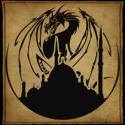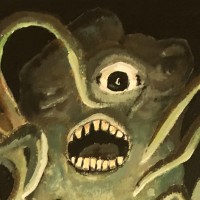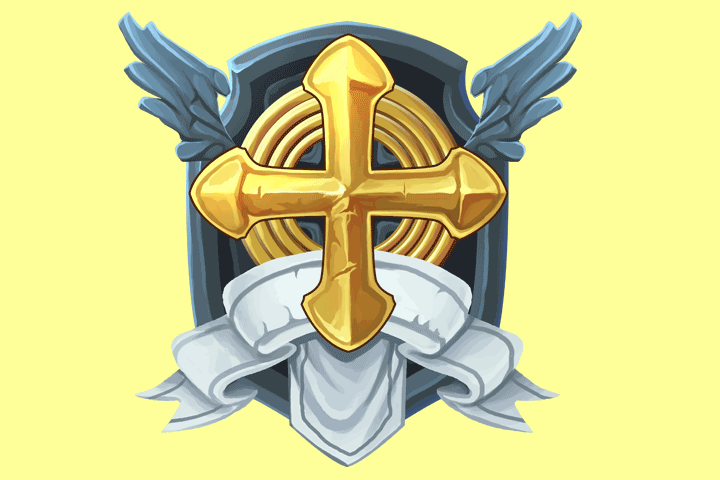Digging more into my setting - World of Neyathis, I was thinking more about the various cultures which would populate it - I have only barely touched upon most of them so far. One of the questions which I think has many applications for roleplaying as well as how the culture thinks is how they dispose of their dead? Think the Egyptians and the value of describing this area is immediately shown.
Here is a list of 30 possible Burial customs both great and small, and I would invite you to add your own.
There is no need to simply choose one custom - you can mix and match and combine many of the following to produce unique customs for your race or culture.
1. Embalming
Careful preservation of the dead has been practiced by many real-world cultures, and perhaps the most famous are the Egyptian mummies. Generally this involves chemical treatment of the corpse. Some of these dead have been known to arise as Bandage Beasts, to the dismay of tomb robbers.
2. Clay coating
The corpse is coated by a thick layer of clay. It is not typically fired, as the corpse would cause the clay to break, so it is left soft. The clay figure may then be painted to resemble the deceased in life. Some cultures may choose to skeletonize the corpse first and then built the deceased back up with clay. In this case, the final product is much closer to the deceased in size and so may be outfitted with the deceased clothing.
Other uses for Clay can be found here.
3. Freezing
Those cultures closer to arctic regions or with availability of cold-inducing magics may preserve their dead by freezing.
The Melashar people, a mountain-dwelling race living close to great glaciers, have built massive ice-domes where they incorporate their dead into the icy walls, each posed peacefully with their hands crossed on the chest. Occasionally priests will converse by magic with these frozen dead.
4. Asphalt Coating
Similar to clay-coating, this substance can be an even better preservative. In Locastus, City of Mirrors, they use asphalt to coat their dead as part of the process of creating Deaders.
5. Pickling
Alcohol, honey and other substances can be used to preserve the dead in large vessels - perhaps glass or pottery. In later times, perhaps the alcohol might be used by graverobbers for other purposes. See Buck-Ogre Rumfor one application. Some sources indicate that Alexander the Great's corpse was preserved in honey for its journey home. This would make a sweet treat for a ghoul!
Similarly, grave robbers in Egypt were said to have found a cask of honey in a tomb, apparently still edible. After helping themselves to the rich treat, they then found hair in the jar, still attached to someone...
6. Drying
Perhaps the simplest means of preservation, this is common in desert regions. This can happen naturally, possibly creating The Parched. Large quantities of salt or other chemical desiccants can also be used to dehydrate the corpse, also allowing for long term preservation.
8. Cremation
A common method of disposal of the dead, the body is burned. Some cultures will also dispose of grave goods in the fire. An excellent example of this is the viking longboat funeral. With access to magic, the cremation could be accomplished via spells of power. Disintegration might be a culture's method of keeping the nobility, at least, from experiencing the indignity of rotting. This is also an ideal method of preventing corpses from rising as corporeal undead, but can sometimes allow for other forms of undead to arise, such as the Urn Beast.
Other cultures with access to volcanic areas may cast their dead to be consumed by lava.
Often, the ashes, or a sample thereof, are retained and placed in various containers.
9. Fed to the Power
The deceased is provided as food to some powerful flesh-eating entity.
The Maletanalu tribe of the Hanaset provide the bodies of their dead (or other undesirables, for that matter) to their crocodile totem Malitazum one-eyed. Similarly, pigs such as the Yird-Swine may be used to keep the quantities of dead on hand to a limited level.
Sometimes, lesser beasts may be retained and cultivated just for this purpose. Some cultures use pits filled with Swarm Snakes or other similar creatures for corpse disposal.
10. Dissolved in Acid
More common as a means of disposing of murder victims, societies which live near large sources of acid, such as the Acid Lakes of Neuapar, make make use of these to dispose of their dead.
Among the Neuaparians, there is a legend that their deity will take mortal form in a body which is immune to the corrosive waters of the lakes of the Thuviack Volcano. As a result, they take great pains that all of their dead are disposed of in this manner. Losing even a single corpse to them is drastically important. They will make superhuman efforts to retrieve their lost dead. Few Neuaparians will travel far, lest their corpse be lost should they die.
11. Consignment to the Sea
The deceased is disposed of by either being thrown into the sea, or perhaps placed on a boat (possibly with grave goods) and sent downriver towards the sea. This means of disposal is very common on seagoing vessels, as it is quite difficult and dangerous to try and preserve dead on long voyages for other means of burial.
12. Left to the Beasts
The deceased is taken away to some remote location and left to scavengers to dispose of. The http://en.wikipedia.org/wiki/Sky_burial Tibetan Sky Burial is an example of this, though the process is much more elaborate then simply leaving the corpse. Some tribes of Wild Elves are known for tree-burials where the dead are tied to branches high up in a tree and left to the beasts and elements.
13. Scattering
The corpse is divided into parts and are disposed of separately. This is often a treatment used to dispose of dead enemies of great powers. In Mythology The Egyptian god Osiris was so treated by Set.
14. Burial
One of the more common methods, possibly employed after various forms of preservation, the corpse is interred into the ground. Sometimes a container is used - from a simple shroud to ornate boxes of metal and wood and is placed into the ground. Afterwards the location may or may not be marked with some type of indicator. The nature of the marker, and location of burial are also factors that can vary widely by culture.
15. Plant Gravemarker
Grave sites are marked by the planting of specific plants or trees.
The Honash people use trees to mark the graves of their fallen, with specific species associated with different major clans. Those of low birth generally use Shrubs. No other marker is used - the location of specific graves is very difficult to determine except perhaps by age of the tree. There are great forests which have arisen on the sites of great battles.
16. Funeral Sacrifice
Upon death of a high-status person, others may be slain to accompany the deceased into the afterlife - often as slaves or spouses. A related custom is where the widow of the deceased would kill themselves in their husbands funeral pyre. Some cultures may only sacrifice livestock, mounts and other creatures.
17. Burial Pit
The Nestorii use great pits which are dug to great depth to dispose of their dead. The pits are sufficiently deep to prevent the smell of decay from being overpowering nearby. The Netorii do not use groundwater for drinking but resort to rain-water collection. The deep pit is symbolic of the journey to the underworld.
18. Display
Normally restricted to preserved corpses, the deceased is put on display after death for a period of time. Possibly only a portion of the body is so treated, such as the head or a hand. Some cultures provide special structures for such display, while others may keep their deceased loved ones within the home for a designated time frame.
19. Crystallization
Corpse is reduced by magic to its basic minerals and forms a large crystal. (Inspired by an old Star Trek episode). These are often collected in purpose-built structures similar to ossuaries to contain the crystals.
20. Cannibalization
As with the name, the dead are eaten. Depending on the cause of death there may be some circumstances where this is not carried out, especially with different levels of medical knowledge and availability of healing (mundane or magical). The Asrok carry out this practice as do The Rephatians. There can also be varying degrees - from a small symbolic portion to the entire corpse being consumed.
21. Transformation
Through use of magic, the deceased body is transformed into some object which represents what and who they were. A common choice is a statue of the person or small portable trinkets, but it is limited only by the power of the magic and the imaginations of the survivors.
22. Animation
Some cultures with access to dark magic will reanimate their dead. These rituals vary in their full effect - some will bind the dead person's spirit to the corpse while others simply animate the empty husk. The deceased may be used for combat, labor, or other purposes.
23. Abandonment
The dead are provided no special consideration apart from that needed for proper sanitation. They are simply treated as inedible garbage and disposed of by whatever means is expedient, even pitched into a nearby midden. Some times this was done to punish the dead for their transgressions in life. This practice was apparently employed by the Romans at times.
23. Necropolis
Entire cities mirroring the cities of the living are constructed to house the dead. These can simply be massive collections of tombs or even mirror images of the living city where the dead lived in life.
24. Exhumation
The culture may remove the dead from whatever location they are currently placed in. The reasons could be for practical purposes - such as making room for new dead, or ritualistic. The http://en.wikipedia.org/wiki/Day_of_the_Dead day of the dead in Bolivia is a real-world example of this.
25. Skeletonisation
As step towards other treatments (display, burial, etc), the corpse may be stripped of all of its flesh. This may be simple butchering, left to insects/carnivorous fish,etc or simply left to rot.
26. ossuaries
Special structures are built to accommodate the bones of the dead, often where graveyards are reused or availability of burial plots are very limited. In lands where necromancy is common, these places are often highly fortified and guarded by knightly orders.
27. Grave Goods
Depending on culture and social station, one may be buried with as little as nothing, or even whole ships, chariots and other equipment.
The Empire of Nethian would convert imperial castles into giant tombs for their fallen emperors, nearly matching a Necropolis in scale. As a result, they have large numbers of oddly placed imperial castles and have started to scavenge building materials from older, more unpopular imperial tombs.
28. Wakes
Parties are thrown to celebrate either the life or death of the deceased (depending upon how they were viewed).
The Mythyin people are normally a dry society, their religion tolerates alcohol only during wakes and birthing celebrations. It is not unheard of for murders to occur solely to prompt a wake....
29. Easy-exit Graves
Some societies and individuals are obsessively afraid of being buried alive, others may seek for their dead to arise as undead. In any case, these groups take pains to allow for easy exit of the grave.
30. Trapping the Dead
The corpse is physically bound before burial - often with chains, metal harnesses, or even cement (where available - the Romans had cement quite early in history). Other cultures might nail the corpse into the coffin, or stake it down.
Morbid Reminders
The monks of the Vrajju Plateau maintain a morbid but fascinating custom in regards to their dead. The bodies of Vrajjur monks are first subjected to a variety of ritual tests, such as slashing and beating of the corpse, to make sure that the person's spirit is truly departed and will not return to vengefully reanimate. Then, the monks will utilize the corpse. Many corpses have their leg or arm bones carved into flutes and their skulls made into drinking goblets. Ribcages are woven with strips of goat leather into baskets and bowls. Spines are used as braziers and to hold up awnings on the balconies of the Vrajjur monasteries.
These practices are in no way meant to disrespect the dead, though many horrified visitors have thought it so. Rather, they are meant to surround the Vrajjur monk with constant reminders of death and the fleeting, temporary nature of the state of life. These grisly tokens are meant to engender contemplation and nonattachment in the Vrajjur monk, and acceptance that he will, eventually, also die, and have his legs made into flutes and his skull into a drinking vessel and his teeth into a ritual rattle.
Buried Standing up
Some of the native American tribes in the southern parts of the United States used to Bury their dead in graves standing up. This way they could walk to the happy hunting grounds.
Forgotten Ones
Once all the proper rituals have been made, a body is wrapped into cloth, and given over to the undertakers, best completely unknown to the family, and they are required to pass the body onto others, no one allowed to know who it is or where he ends up. This is done so as to prevent the spirit from returning to the body, and rising again... if no one knows, the bond is much weaker.
The custom requires a body changes hands at least two times away from people that knew the deceased. Once the journey is concluded, it is buried in an unmarked grave.
This is best used in locales with large proliferations of undead. Families usually keep shrines to remember their ancestors and draw their spirits to them, away from the rotting body they could occupy, but would lead them to evil.
Bounded
The remains are placed in a concencrated area, be they buried, creamated, or so on. The remains are specifically bounded by the location they are, so they can not "escape" either as undead or a spirit, and bother the living.
Stones District is a good example of this.
There is probably some form of watchman for the area. An undertaker is now a dangerous handler of the undead, in worlds where The Dead can get up. There maybe be others Mourners of the Quiet Guild or priests who keep watch on these things.
Article Codex

Dungeons • Plains • Style
The simple graves of a folk long gone, these are still favoured by graverobbers.
Lifeforms • Intelligent Species • Desert
Deep within the shifting sands, natives whisper of creatures trapped within ancient tombs, their insane wails audible through feet of solid stone seals.
Read, now, as I delve through the mystery and bring forth the facts about the Tah'k Mumz'kar; the Bandage Beast; The Mummy.

Locations • Ruins • Plains
The Yughort were the fathers of the steppe civilizations, rulers of the first nomadic empire of the plains. Their signs can still be found, including their conical burial towers.

Dungeons • Any • Style
Graves of a small, little known folk, exotic as dangerous.

Items • Home/ Personal • Magical
Mystical forces applied to to a commonday item like pottery... are you up to the challenge?


Items • Jewelry • Non-Magical
"Okay, I didn't like Thanger", I thought, "He was a punta of epic proportions, but nobody deserved to die like that." These thoughts were crowding out the screaming in the back of my head that we were all still in danger if we did not move.
I saw Peeth kneel down besides the biggest chunk of remains, where the heart was. He reached in under his leathers and pulled out a piece of jade on a simple chain. He placed it on the remains reverently. It was fitting, Thanger died stepping in to protect Peeth.
"He needs this more than I do. Maybe it will keep him out of The Hells."

Lifeforms • Constructed • Any
Recycling the dead for the greater good since 1704

Lifeforms • Unique • Swamp
The Yang to Lutazum's Ying, the grand totem of the Maletanalu, the 5th tribe of the Hanaset.

Lifeforms • Unique • City/ Ruin
Et deprecabantur eum spiritus dicentes mitte nos in porcos ut in eos introeamus (Mark 5:12)
Locations • Neighborhoods • Any
The Obtort Ward is all that remains of what was once an ancient battlefield that was afterwards converted into a mass grave.

Lifeforms • Third Kingdom • Desert
Slain by thirst and heat, these sad souls seek moisture - any moisture - to quench their eternal, burning thirst.

Dungeons • Plains • Style
The Pelezians, or 'clay people' were strongly bound to the earth. In fertile plains and valleys they lived their happy existence, peaceful, yet ever on their guard. Many nomadic attackers they defeated, until a different enemy came; their advanced technology and weapons (and magic) were beyond the skills of defenders. One-by-one their settlements fell, until the clay people were not more.
To the greedy students of the past, their heritage is but not forgotten.

Organizations • Mystical • Local
A people of systematic inhumanity - beyond bloodthirsty.
Not Registered Yet? No problem.
Do you want Strolenati super powers? Registering. That's how you get super powers! These are just a couple powers you receive with more to come as you participate.
- Upvote and give XP to encourage useful comments.
- Work on submissions in private or flag them for assistance.
- Earn XP and gain levels that give you more site abilities (super powers).
- You should register. All your friends are doing it!
? Responses (18)
Updated: Okay, this one is being released. There are definately other concepts and customs not listed here. When and if you add them, please continue the numbering schemes
Nice 30, and one that bears some thought for a serious game setting. I plan on adding something to this sub! Nice work Val.
A nice little article to remind one of their options.
Great reference! Lots to ponder. Lots of both logical and bizarre rituals. I think Wulf's sub on "Embalming" should somehow find its way into this codex.
I have a question on #10. Am I right in assuming that the Neuaparians do NOT WANT to see their deity take on mortal form? Just curious, that's an interesting twist. Make them a sub! The acid lakes, the fear of losing even 1 corpse, etc...good stuff!
Again, each of the 30 is fun to read and ponder, even if it's a familiar one. Great stuff, val!

#10 Fixed - the intent was they wanted their god to return, but would only know when a body failed to dissolve in the caustic acids of the lakes.
Added a couple of customs, and maybe it's suitable to mention the Afterlife options as well.
Great collection!
Really good and I greatly enjoyed it. 5/5
Incredibly useful and informative. (I had no idea the romans had cement till I read this) It helps to define a culture by deciding how they deal with their dead, and can be used to simple effect to make the kingdom next door stand out as different than every other one.

Easy Link for Roman Cement - actually concrete:
http://en.wikipedia.org/wiki/Roman_cement
Add a bit of fantasy license, and you can have ready-pour castles! :P
Use a bit of magic to create the forms. A few giants to haul and mix it up, and well, your multi-year project can take a lot less time.
Just Fantastic!
Sweet idea that's inspiring.
Where is idea #7?

Good catch, but you really don't want to know that one :P
I'll need to check my notes.
I love this, great work!
Yep. Very usable indeed.
Very useful thanks! I hope to use this in an ancient underground city I am creating.
